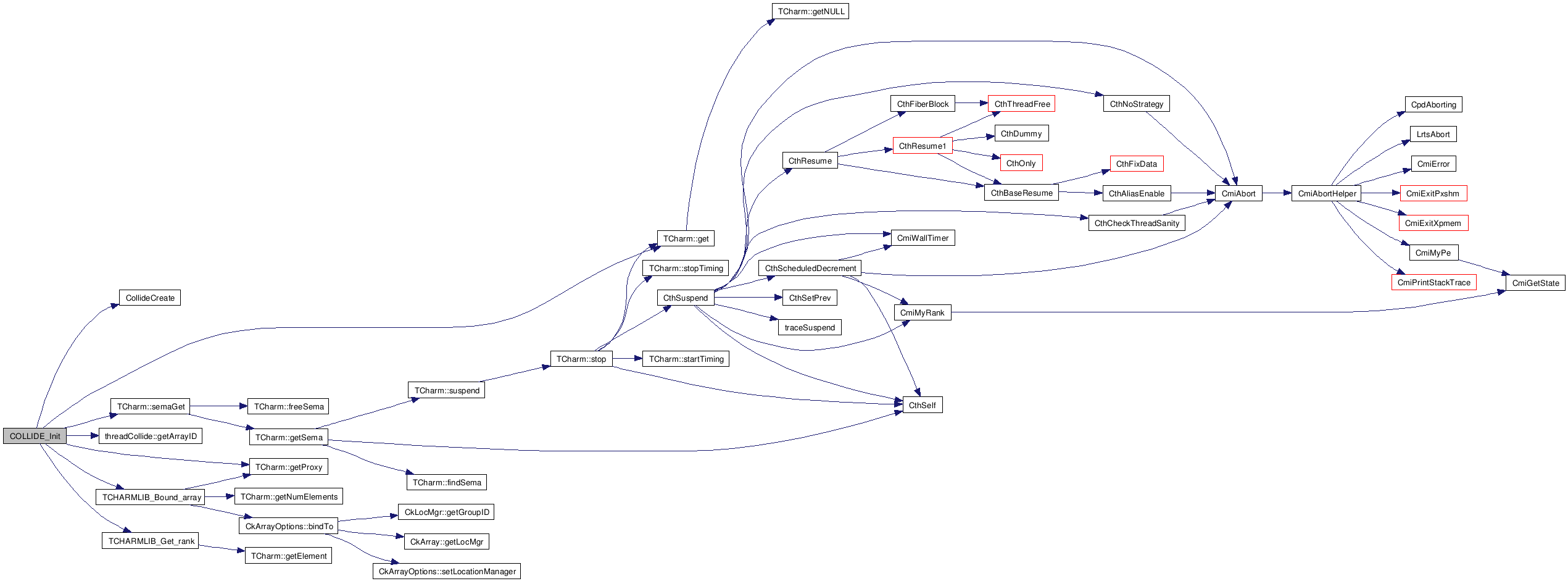

Go to the source code of this file.
Typedefs | |
| typedef int | collide_t |
| A collide_t is a handle to a single collision detection grid. | |
Functions | |
| collide_t | COLLIDE_Init (int mpi_comm, const double *gridStart, const double *gridSize) |
| Create a new Collision grid. | |
| void | COLLIDE_Boxes (collide_t c, int nBox, const double *boxes) |
| Collide these boxes (boxes[0. | |
| void | COLLIDE_Boxes_prio (int chunkNo, int nBox, const double *boxes, const int *prio) |
| Collide these boxes (boxes[0. | |
| int | COLLIDE_Count (collide_t c) |
| Immediately after a Collision, get the number of Collision records. | |
| void | COLLIDE_List (collide_t c, int *Collisions3) |
| Immediately after a Collision, get the colliding records into Collisions[0. | |
| void | COLLIDE_Destroy (collide_t c) |
| Destroy this Collision grid. | |
A collide_t is a handle to a single collision detection grid.
Definition at line 15 of file collidec.h.
Create a new Collision grid.
This collective creation call must be made from all the threads of a TCHARM array.
| mpi_comm | is the MPI communicator, or 0 if not using MPI. | |
| gridSize | gives the size of one voxel, which should be several times larger than the size of the average object. | |
| gridStart | gives the origin of the voxel array--the corner of the voxel (0,0,0). For best performance, if possible you should align the voxel array so most objects lie in exactly one voxel. |
Definition at line 282 of file threadCollide.C.
References c, CollideCreate(), TCharm::get(), threadCollide::getArrayID(), TCharm::getProxy(), _ckGroupID::idx, rank, TCharm::semaGet(), TCHARMLIB_Bound_array(), and TCHARMLIB_Get_rank().
Referenced by ParFUM_Collide().


Collide these boxes (boxes[0.
.6*nBox]). This is a collective call--all registered chunks should make this call. Unliked CollideClassed, below, no Collisions are ignored; or equivalently, every box lies in its own Collision class.
| nBoxes | number of independent objects to collide. | |
| boxes | an array of nBox 3d bounding boxes, stored as x-min, x-max, y-min, y-max, z-min, z-max. |
Definition at line 320 of file threadCollide.C.
Collide these boxes (boxes[0.
.6*nBox]), using the given box priorities (prio[0..nBox]).
Referenced by parallelTransfer_c::transfer(), and parallelSurfaceTransfer_c::transfer().

Immediately after a Collision, get the number of Collision records.
This value is normally used to allocate the array passed to COLLIDE_List.
Referenced by parallelTransfer_c::transfer(), and parallelSurfaceTransfer_c::transfer().

Immediately after a Collision, get the colliding records into Collisions[0.
.3*nColl]. Collisions[3*c+0] lists the number of box A, which is always from my chunk Collisions[3*c+1] lists the source chunk of box B (possibly my own chunk) Collisions[3*c+2] lists the number of box B on its source chunk
Referenced by parallelTransfer_c::transfer(), and parallelSurfaceTransfer_c::transfer().

| void COLLIDE_Destroy | ( | collide_t | c | ) |
Destroy this Collision grid.
Referenced by ParFUM_Collide_GetCollisions().

 1.5.5
1.5.5